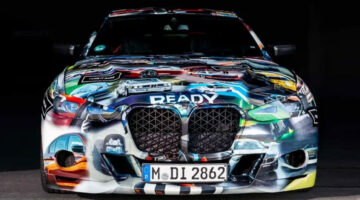PetroliciousCo takes a close look at the BMW M1, a supercar whose career on-track was doomed from the start but whose road going appeal continues to grow to this day.

Like the i8, BMW in the 1980s saw its brand new M1 supercar as THE expression of its automotive art, as well as a potential dominator on-track (you need only look at the name for proof of this). Ironic then that its significance at the time would sink without trace thanks to financial insecurity and poorly timed regulation changes.
Conceived as a concept in 1975, the M1 was built to Group 4 regulations to represent BMW in sportscar racing. All the signs pointed towards domination from Munich thanks to a lightweight racing frame and (in time) a mid-mounted turbocharged six-cylinder. Throw in around 400 road going examples to cover homologation regulations and the M1 – formerly engineering concept 26 – was ready to rock. Originally a joint-project with Lamborghini, even imminent bankruptcy and eventual dropout of the Italian powerhouse slowed the M1’s prominent rise only slightly, BMW Motorsports GmbH working in unison with contract manufacturers across Europe to complete the project.
Then came 1980 and a change to Group 4 regulations that saw the M1’s design become obsolete over night. Even the shortlived BMW M1 ProCar Championship – which boasted Emerson Fittipaldi, Niki Lauda and Mario Andretti amongst its entry lists – couldn’t stop BMW Motorsport’s budget being sliced to ribbons and the M1’s rise to potential promise careen down almost vertically.
Fast forward to today and Mike Ura, owner of the 1980 M1 you see above. Power from the M88/1 engine was such that the Beemer would hit 160mph (258kph), making it at the time the fastest production car in the world. Today, with its retro looks, fearsome soundtrack and ‘take no prisoners’ supercar driving style, the M1 remains one of Munich’s most sought after models.
Funny how things work out.
Source – PetroliciousCo



